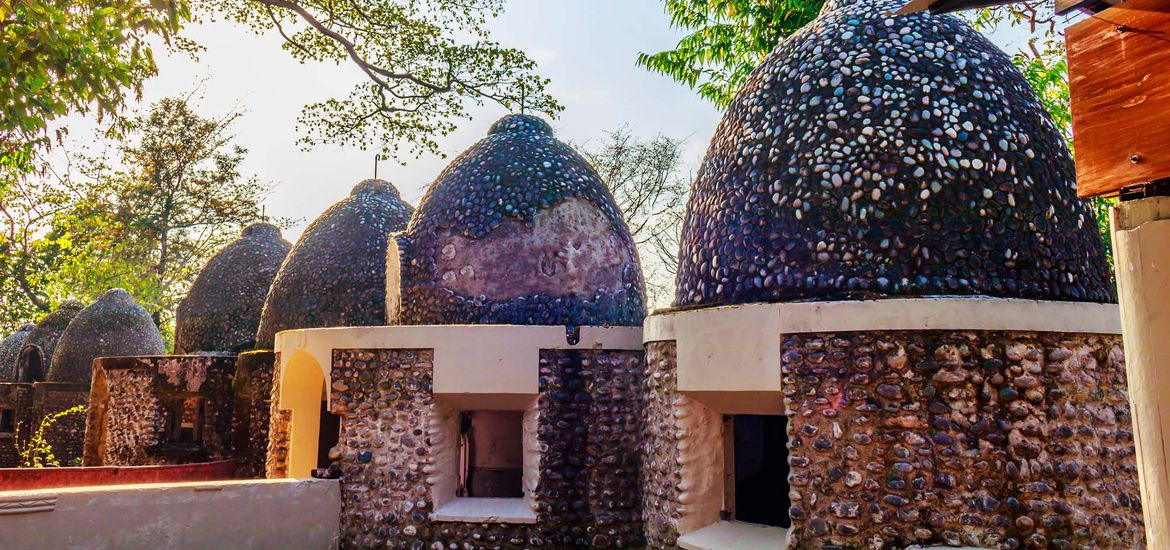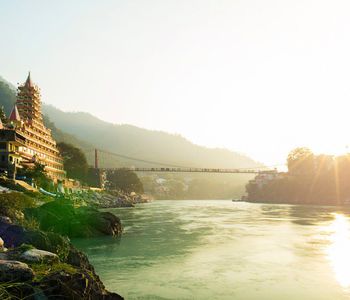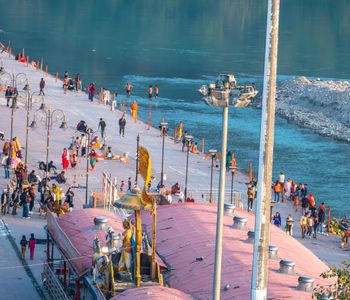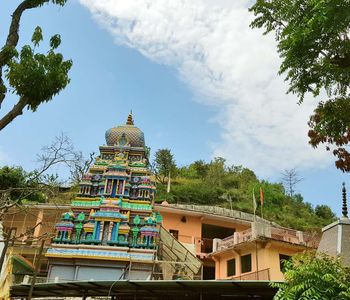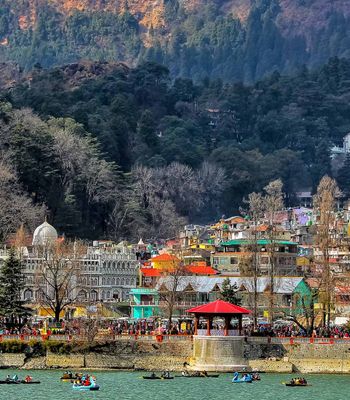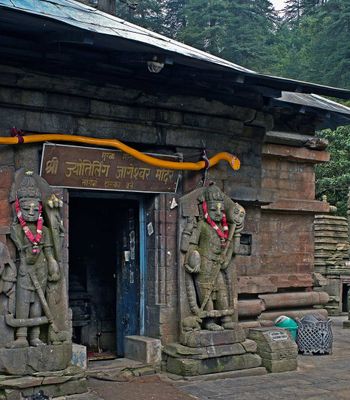The Beatles Ashram, or Chaurasi Kutia, is not just a spiritual retreat—it’s where global pop culture met ancient Indian wisdom. In 1968, The Beatles stayed here to learn Transcendental Meditation, leading to a creative explosion that gave birth to nearly 40 songs.
Today, this abandoned-yet-alive ashram stands as a timeless symbol of inner peace, artistic rebirth, and East-West cultural fusion.
Where Music Met Meditation: The Legacy of the Beatles Ashram
The Beatles Ashram was established in 1963 by Maharishi Mahesh Yogi as the International Academy of Meditation. Located on a 14-acre site in Rishikesh, Uttarakhand, the ashram was built with support from American heiress Doris Duke and leased from the Uttar Pradesh Forest Department in 1961.
Designed as a secluded retreat in the Himalayan foothills, the ashram gained international fame in 1968 when The Beatles (John Lennon, Paul McCartney, George Harrison, and Ringo Starr) and other celebrities like Donovan Leitch and Mia Farrow visited to study meditation under Maharishi’s guidance. Their stay marked a historic cultural exchange and led to the creation of many songs featured in the White Album, one of their most iconic records.
Abandoned in the 1990s, the site returned to the forest department in 2003 and remained derelict until its public reopening in December 2015 as part of Rajaji Tiger Reserve. Now officially called Beatles Ashram, it continues to attract visitors worldwide.
A major exhibition in 2018 commemorated the 50th anniversary of The Beatles’ visit, cementing its legacy as a symbol of spiritual awakening and East-West cultural connection.
Architectural Marvel: Fusion of Form and Philosophy
The Anand Bhavan and Siddhi Bhavan structures within the Beatles Ashram complex stand as captivating examples of architectural experimentation, blending East and West. These multi-storey buildings, once used for housing teachers and trainees, feature a distinctive fusion of 1960s Western modernist design with traditional Indian influences.
The most striking features are the rooftop meditation domes – oval-shaped structures painted in vivid colours and adorned with expressive murals and slogans. These inverted egg-shaped domes were intended to create a private, peaceful cocoon for meditators, suspended above the daily distractions of the world below.
Surrounding them are panoramic views of the lush Himalayan forests, the Ganges River, and distant mountains – a setting carefully chosen to amplify inner reflection.
The main buildings themselves resemble stepped pyramids, characterised by multi-arched windows and sloping facades – a rare architectural motif that evokes both ancient temples and modernist sensibilities. This unusual layering offered natural ventilation and light, ideal for spiritual retreats in a warm climate.
Iconic Highlights of The Beatles Ashram
Surrounded by the tranquil forests of Rajaji National Park, here are the most iconic elements of this extraordinary site:
Chaurasi Kutiya
These dome-shaped structures were once used by practitioners to deepen their spiritual discipline in seclusion. Each unit typically consists of a ground-level living space with a tiny rooftop meditation chamber, designed to promote isolation and focus.
One of these, Cave Number 9, is famously believed to have been used by The Beatles themselves during their stay in 1968.
The Beatles Cathedral Gallery
Referred to as the Beatles Cathedral Gallery, it brims with evocative graffiti, portraits, and The Beatles’ lyrics that beautifully preserve the essence of their spiritual journey. This structure stands as a true homage to the creative renaissance that occurred during their time at the ashram.
Graffiti-Laden Ruins
Throughout the grounds, visitors can find haunting yet mesmerising ruins that have been brought to life by lively street art and reflective verses. The fusion of nature’s reclaiming growth with psychedelic murals offers a profound visual experience—an artistic nod to the 1960s spiritual and countercultural movement.
Cottages and Residential Quarters
The site also features a striking three-storey residential building, which was presumably the hostel for students and followers. These once-luxurious rooms included private balconies and en-suite bathrooms, a testament to the high standards maintained during the Ashram’s peak, particularly when it hosted elite international visitors.
A lesser-known gem is the kitchen area, where group meals were once served. The quiet ruins still hold the spirit of community and simplicity that defined the ashram’s early days.
The River Ganga Backdrop
Situated along the serene banks of the holy Ganga, the ashram enjoys a tranquil natural setting. The flowing river, forest trails, and occasional langur sightings contribute to the meditative ambience, offering visitors a holistic escape into spirituality and nature.
Golden Hours at the Beatles Ashram
The ideal time to visit the Beatles Ashram is between October and March, when Rishikesh enjoys cool, pleasant weather. March to early April is especially charming, with spring in the air and energy around the International Yoga Festival. Avoid the hot summers (April–June) and monsoon (July–September).
For the best views and photos, plan your visit in the late afternoon (official open hours are from 10 am to 4 pm). The soft lighting, abundant greenery, and serene vibe make it perfect for exploring the 84 meditation huts and catching a stunning sunset over the river from the cliff’s edge.
Beatles Ashram: The Journey Begins Here
The Beatles Ashram lies on the eastern bank of the Ganges, nestled near Swarg Ashram, opposite Muni Ki Reti. Here’s how to reach:
By Air
The nearest airport is Jolly Grant Airport (DED), Dehradun (around 30.7 km away). From there, hire a taxi or cab for a scenic 1-hour drive.
By Train
Rishikesh Railway Station is about 13.6 km away. Taxis and auto-rickshaws are easily available outside.
By Road
Within Rishikesh, you can hop on tuk-tuks, rent a scooter, or walk via the Ram Jhula footbridge. Wear comfy shoes—the last stretch involves a peaceful forest walk! Elderly visitors or those with mobility issues are advised to take a taxi to the main entrance.
Though the Beatles Ashram was abandoned for decades due to a leasing dispute, it has now been partially restored by the Indian government and is open to the public. Whether you're a die-hard Beatles fan or just a curious traveler, step into the echoes of the past, into a moment in time when the world came to Rishikesh in search of something more.
